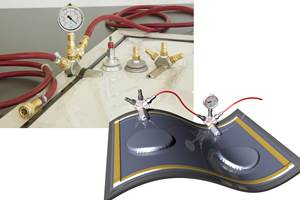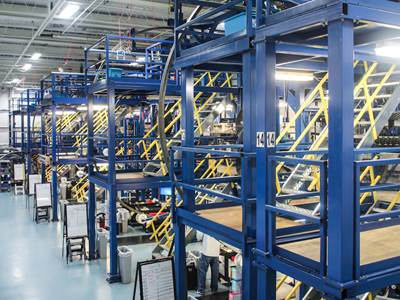Carbon fiber Hyperloop design to transform transportation
A group of Carnegie Mellon University students will test out their carbon fiber pod design during a competition at SpaceX’s headquarters in August.

Imagine the potential to travel from distances such as Los Angeles to San Francisco in 30 minutes. It’s not science fiction, it’s not a concept that won’t happen for another 50 years— it’s on track to be our new reality, thanks to Elon Musk and some of the brightest university students around the world. Back in 2013, Musk first unveiled the idea for a new high-speed ground transport system, named Hyperloop. It would feature a network of tubes that could span hundreds of miles. In order to accelerate the development of Hyperloop, Musk announced a competition that called on universities to compete and build the best Hyperloop pod.
For college students that want to make a difference in the world, it’s a dream project. This past January, Texas A&M University sponsored a Design Weekend where more than 100 teams competed to become semi-finalists in the Hyperloop Competition. One of the finalists from that competition includes a group of Carnegie Mellon University students whose design is “solid and impressive,” according to SpaceX. Carnegie Mellon Hyperloop is an interdisciplinary team of more than 50 engineers, designers and business students with the vision of taking the pod all the way through the competition to win.
The 30 different student teams, including the group from Carnegie Mellon, will have the chance to test out their pod designs on the one-mile test track outside of SpaceX’s headquarters in Hawthorne, Calif. in August.
I talked with some of the students from Carnegie Mellon as their design includes a carbon fiber shell, which encloses the various components of the pod. The dimensions of the carbon fiber structure are 8 foot by 3.5 foot by 3 foot. Here's a photo of the design:

“Being a student team, this is the first time the team members are building a huge carbon fiber shell and a big challenge is to make the high-quality mold for the carbon fiber layup,” said Siddharth Alampally, graduate student of the Mechanical Engineering Department at Carnegie Mellon. “This is a process that needs patience with such a big structure.”
“We decided to build a carbon fiber-reinforced plastic structure because it has a very high strength-to-weight ratio and we chose the process of resin infusion as it allows us to manufacture a custom shape with high-quality,” he said.
Other components of the pod include maglev, magnetic levitation, which is not used in transportation anywhere in U.S. and bringing these concepts to reality is another big challenge.
“In our efforts to design a truly scalable Hyperloop pod, we find ourselves dealing with questions that even industry experts have trouble answering,” the students wrote on their Crowdfunding page. “The most pressing issue is that of the air bearings we intend to use. Even the most promising alternative for our levitation system, an air caster style bearing, has never been tested at the extreme conditions that have been proposed for the final event.”
The situation requires that they carry out primary research and prototyping by putting together a test rig that artificially simulates these conditions for the Levitation assembly. The group plans to complete the pod by the last week of July so that it gives more time for testing.
Wish the team luck for the August competition and go team carbon fiber!
Related Content
Bladder-assisted compression molding derivative produces complex, autoclave-quality automotive parts
HP Composites’ AirPower technology enables high-rate CFRP roof production with 50% energy savings for the Maserati MC20.
Read MoreSmartValves offer improvements over traditional vacuum bag ports
Developed to resolve tilting and close-off issues, SmartValves eliminate cutting through vacuum bags while offering reduced process time and maintenance.
Read MorePlant tour: Albany Engineered Composites, Rochester, N.H., U.S.
Efficient, high-quality, well-controlled composites manufacturing at volume is the mantra for this 3D weaving specialist.
Read MoreCOMPINNOV TP2 project promotes use of thermoplastics in aerospace
Completed in 2023, COMPINNOV TP2 explored thermoplastic composites, enhancing the understanding between prepregs and production methods to foster the potential for French aerospace innovation.
Read MoreRead Next
VIDEO: High-rate composites production for aerospace
Westlake Epoxy’s process on display at CAMX 2024 reduces cycle time from hours to just 15 minutes.
Read MorePlant tour: A&P, Cincinnati, OH
A&P has made a name for itself as a braider, but the depth and breadth of its technical aptitude comes into sharp focus with a peek behind usually closed doors.
Read MoreModeling and characterization of crushable composite structures
How the predictive tool “CZone” is applied to simulate the axial crushing response of composites, providing valuable insights into their use for motorsport applications.
Read More






















